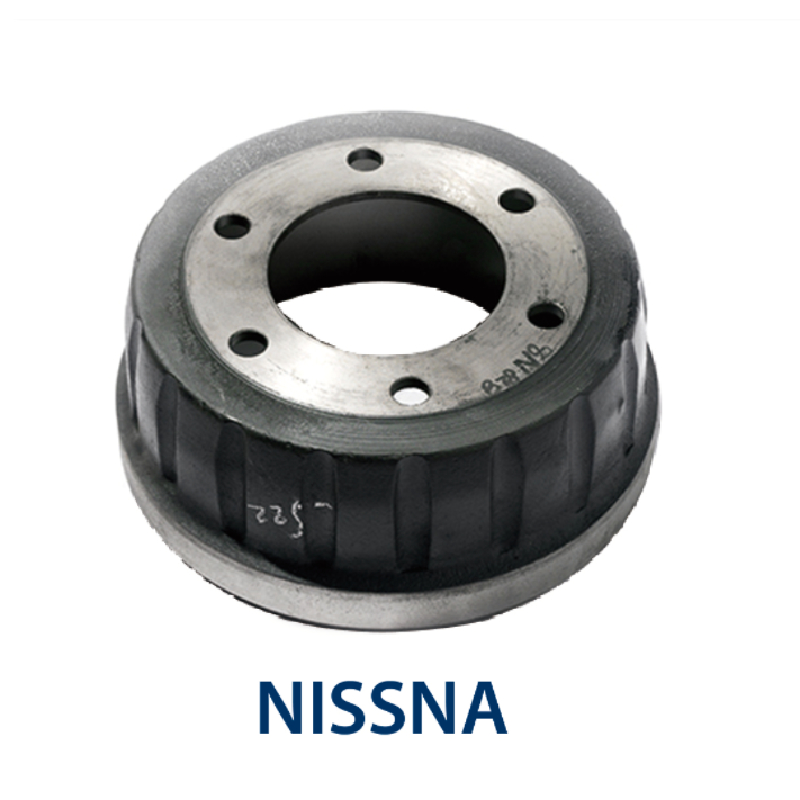12 月 . 04, 2024 09:48 Back to list
function of a brake drum
The Function of a Brake Drum
A brake drum is an essential component in the braking system of a vehicle, particularly in older cars and heavy-duty trucks. Its primary function is to facilitate the braking process to ensure the vehicle can stop safely and efficiently. Understanding how a brake drum functions requires a closer look at its design, operation, and importance in the overall system.
At its core, a brake drum is a circular metallic component that is fixed to the wheel hub of a vehicle. When brakes are applied, the brake drum works in conjunction with brake shoes, which are typically lined with friction material. The mechanism operates through hydraulic force or pneumatic pressure generated by the braking system when the driver presses the brake pedal.
Mechanism of Action
When the brake pedal is pressed, brake fluid is directed from the master cylinder to the wheel cylinders. This fluid acts on the brake shoes, pushing them outward against the inner surface of the brake drum. As the shoes expand and come into contact with the drum, friction is created, which slows down the rotation of the wheel. It is this friction that ultimately brings the vehicle to a stop.
The design of the brake drum allows for even distribution of force across its surface, which helps to prevent uneven wear and overheating. Most brake drums are made of cast iron, a material chosen for its strength and ability to dissipate heat. With the proper maintenance, brake drums can last for many years, but they do require periodic inspection for wear and tear as part of routine vehicle maintenance.
Advantages of Brake Drums
function of a brake drum

Brake drums offer several advantages, especially in specific vehicle applications. One significant benefit is their inherent design, which allows for a larger surface area for the brake shoes to press against. This can result in superior stopping power, especially when towing heavy loads, making brake drums a popular choice for trucks and larger vehicles.
Another advantage of drum brakes is their ability to self-energize. When a vehicle is moving forward and the brakes are applied, the rotation of the drum can help push the brake shoes into the drum with greater force. This self-energizing effect means that less pedal effort is required to achieve effective braking, making it easier for drivers to operate heavy vehicles.
Limitations of Brake Drums
Despite their advantages, brake drums also have drawbacks. One notable limitation is their performance in high-speed conditions. Drum brakes tend to be less effective than disc brakes when it comes to dissipating heat, which can lead to brake fade during prolonged use, such as during long downhill descents. This is one reason why many modern vehicles have migrated to disc brake systems, which provide better performance, especially in extreme conditions.
Additionally, drum brakes may require more frequent maintenance compared to disc brakes. The enclosed design can cause dust and debris to accumulate within the drum, potentially affecting braking efficiency. Regular inspections and adjustments are necessary to ensure that the brake shoes remain properly aligned and that the braking system operates effectively.
Conclusion
In summary, the brake drum plays a crucial role in the functionality of a vehicle's braking system, particularly in larger and heavy-duty vehicles. Its ability to harness friction effectively allows for reliable stopping power, making it an essential element of vehicle safety. While modern advancements have seen a shift towards disc brake technologies, the brake drum continues to be valued for its unique advantages and specific applications. Proper maintenance and understanding of this component not only enhance vehicle performance but also ensure the safety of drivers and passengers on the road.
-
Brake Drum for Kamaz Trucks Durable OEM Replacement & High Performance
NewsMay.30,2025
-
Brake Drum Man High-Quality Drum Brake & Shoe Solutions
NewsMay.30,2025
-
High-Performance Brake Drum for Kamaz Trucks Durable Drum Brake Components
NewsMay.29,2025
-
Brake Drum Man High-Quality Drum Brake Drums & Brake Shoes
NewsMay.29,2025
-
Brake Drum MAZ High-Performance & Durable Replacement Parts
NewsMay.29,2025
-
heavy truck brake drums
NewsMar.07,2025
